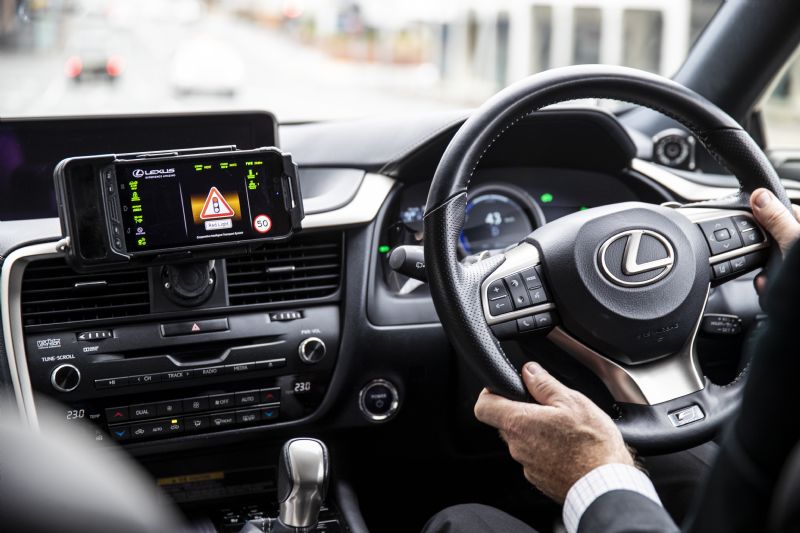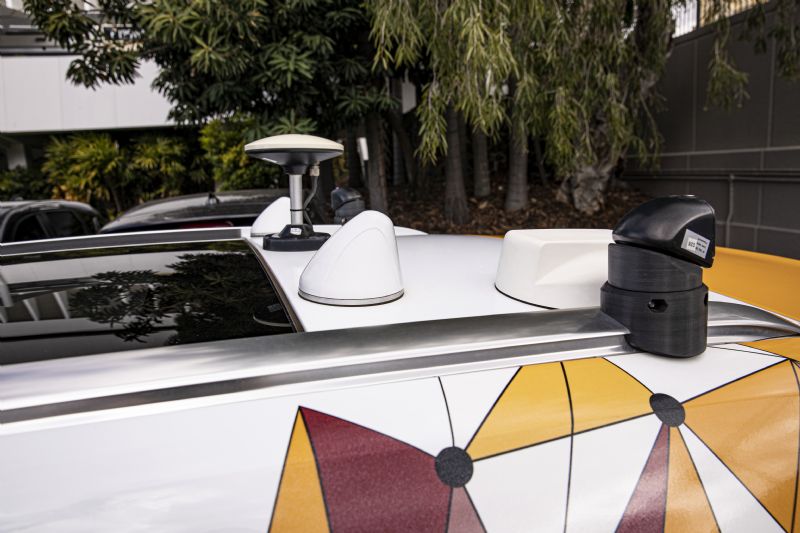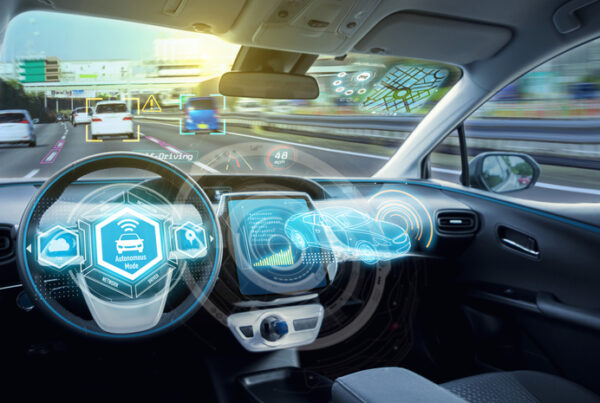It looks like it’s not just the AFL that’s taking Queensland by storm right now, with Australia’s largest on-road connected-vehicle project now underway in the state’s capital.
The Queensland Government’s Ipswich Connected Vehicle Pilot is a ground-breaking development that enables sensors installed at 29 intersections to “talk” to vehicles equipped with Dedicated Short-Range Communications (DSRC) technology.
Using radio waves, the technology is designed to provide drivers with advance information of road conditions including changes to speed limits, hazards on the road ahead and even that a pedestrian will be crossing a nearby intersection.
Two Lexus RX 450h F Sport SUVs have been fitted with sensitive DSRC equipment that enables them to communicate with each other and with roadside infrastructure such as traffic lights.
The Ipswich pilot also involves fitting DSRC technology to 500 cars owned by the general public, enabling their vehicles to communicate with the infrastructure.
Queensland Transport and Main Roads Minister Mark Bailey welcomed Lexus Australia’s involvement in the pilot.
“It’s great to see major car manufacturers get involved in the testing of connected vehicle technology in Australia, especially in the Ipswich pilot as the preferred testing site,” Mr Bailey said.
“The support of manufacturers like Lexus will enable experts to gather data on additional safety scenarios involving vehicle-to-vehicle connectivity, such as emergency electronic braking warnings and slow, or stopped vehicle warnings.”

Lexus Australia chief executive Scott Thompson said combining DSRC technologies with the advanced Lexus safety systems provided a major opportunity to alert drivers to an even broader range of potentially dangerous situations.
“Our local engineering team, working closely with the Queensland Government, will assess the effectiveness of intelligent transport systems while expanding our understanding of driver acceptance of these technologies,” Mr Thompson said.
“Lexus Australia is proud to contribute to a project that – as well as being designed to save lives – can also reduce congestion, cut fuel consumption and help the environment – all while making driving more enjoyable.
“Through our participation, we are taking advances in safety technology out of the laboratory and putting them where they belong – on our streets.”
The Lexus commitment to connected-vehicle technology is driven by a global Lexus vision to reduce traffic fatalities and CO2 emissions to zero.
The two Lexus RX 450h F Sport SUVs are equipped with self-charging hybrid technology that utilises two power sources: a powerful petrol engine and electric motor. Their standard safety features include a collision-warning system, autonomous emergency braking and automated lane-keeping.

Specialised vehicle to infrastructure technologies added to the two Lexus vehicles are:
• Advanced red-light warning: Alerts drivers that they likely to violate the red light unless they apply the brakes.
• Turn warning – vulnerable road user: Alerts drivers that a pedestrian or cyclist has pushed a signal call button and are crossing during the permitted phase.
• Road hazard warning: Alerts drivers to hazards, such as debris or water on the road, or a crash.
• In-vehicle speed warning: Provides drivers with information about active, static or variable speed limits.
• Road works warning: Notifies drivers approaching or driving through roadworks zones, providing speed information and alerting them if they are exceeding roadworks speed limits.
• Back-of-queue warning: Alerts drivers to a downstream queue on motorways using the Managed Motorways automated back-of-queue algorithm.
The Lexus vehicles are also equipped with specialised vehicle-to-vehicle technology:
• Slow/stopped vehicle: Warns the driver when a vehicle ahead is stopped or travelling slower, and there is a risk of rear-end collision.
• Emergency electronic brake light: Alerts drivers to a cooperative vehicle that is braking hard some distance ahead.






